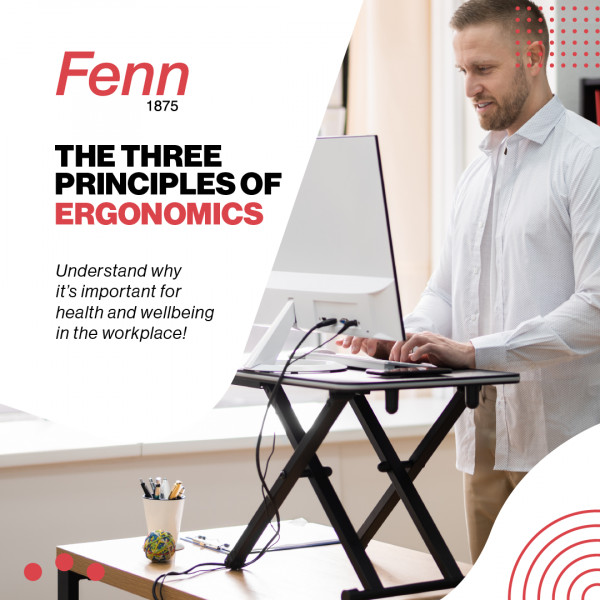Ergonomics is a scientific field, informing both design and health & safety considerations in the workplace. With it being a specialised subject and academic in some areas, it’s easy to feel confused when buying a simple desk chair. Furthermore, ergonomics is not something we think of on a daily basis. But, after prolonged periods of time sitting in uncomfortable positions - we start to notice!
As the pandemic shifted us away from carefully designed offices with ergonomic equipment and set-ups, we’ve started to feel it. The dining room table has served its purpose but has left many of us with more aches and pains. With hybrid work and fully remote positions becoming normal, it’s time to look at more permanent options with correct set ups. While our workplaces are changing, the focus on health and wellbeing should be present.
With this in mind - here are the three principles of ergonomics you should consider when designing your space…
Physical Ergonomics
The most focussed upon element by health and safety professionals. Physical ergonomics is important when planning your environment as it considers how you and your team will respond to the physiological demands of the workplace.
Poorly designed spaces that don’t cater to our body's needs can be the cause of musculoskeletal disorders (MSD) - which are one of the most frequent causes of time off work. Employers may be liable to pay compensation if the result of an MSD is proved to have come from a poorly equipped and set up work space.
Some of the most common MSDs are:
- Carpal tunnel syndrome (trouble with nerves in your wrist)
- Epicondylitis (AKA Golfers Elbow)
- Muscle strains
- Lower back injuries
- Rotator cuff injuries (the shoulder)
- Tendinitis (inflammation or irritation of a tendon)
- Trigger finger (where your finger gets stuck in a bent position)
You can mitigate risks for developing the above by ensuring your work environment is suitably equipped - however some signs to look out for in your everyday activity include:
- Repetitive movements
- Strain from vibrations
- Undue force needed to complete a task
- Poor posture
Having the correct equipment and accessories can go a long way to improving your team’s wellbeing. DSE approved workstations and proper training on how to interact with the environment will improve conditions too. This also stands for tasks such as lifting or carrying heavy items that may not be required every day but can cause injury if not conducted appropriately.
Cognitive ergonomics
Often overlooked in comparison to physical ergonomics, our cognitive processes are equally important. It’s how we interact with our colleagues, clients and with business processes. Memory, reasoning and perception are all mental processes and have a huge impact on our daily lives.
Having a good grounding on cognitive ergonomics means processes are taken into consideration so you team is able to:
- Process and interact with data
- Collate and decipher information
- Prioritise and complete tasks
In order to ensure your team can do this with ease, look at your workstations and the software you use. It should all be clear, simple and user friendly. Unnecessary clutter and clunky user interfaces cloud judgement and the busy environment can cause stress and pressure, making it harder to complete tasks.
When you consider cognitive ergonomics, engagement, wellbeing and productivity can improve.
Organisational ergonomics
The big picture - look at the macro, this aspect of ergonomics considers the design of work systems: organisational structures, policies and processes. It can improve your entire business if you take this into consideration. Enhance the performance and effectiveness of your team by making your systems more streamlined and easy to use.
If you’re looking to improve your workplace, get in touch with our team at This email address is being protected from spambots. You need JavaScript enabled to view it.
